Catfish Dishes: Exploring the Delicacies of Itakura
May 16,2019
Catfish Dishes: Exploring the Delicacies of Itakura
May 16,2019
Part of an occasional series where food culture expert Kiyoshi Aya takes us on a tour of local cuisines and lifestyles all over Japan.
Most Japanese today are more used to eating saltwater fish than freshwater fish, but in the old days, freshwater fish were an indispensable part of the diet for those who dwelt far from the sea. In Itakura, Gunma Prefecture, the custom of eating freshwater fish still endures. We asked Kiyoshi Aya about the catfish cuisine of Itakura.
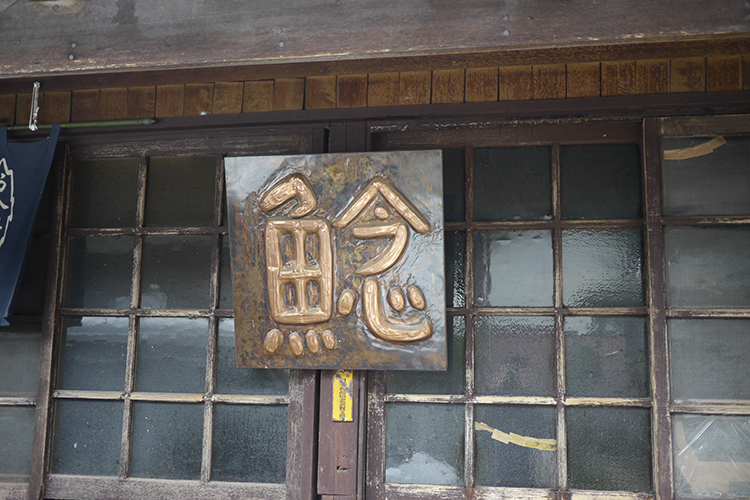
Itakura, which is traversed by the rivers of the Watarase and Tone basins, used to be a riverside community, but most of its the once-extensive wetlands have been reclaimed and turned into residential neighborhoods. Nonetheless, “the custom of eating freshwater fish is still alive and well,” according to Aya. When you visit the local grocery store or producers’ market, the shelves are lined with a multiplicity of freshwater fish treats like carp sashimi and deep-fried loach.
“Itakura, Gunma Prefecture has several historic restaurants where you can enjoy freshwater fish, which is generally hard to come by. Especially well-known is Kobayashi-ya in front of the Raiden Shinto Shrine. It’s renowned for its catfish.”
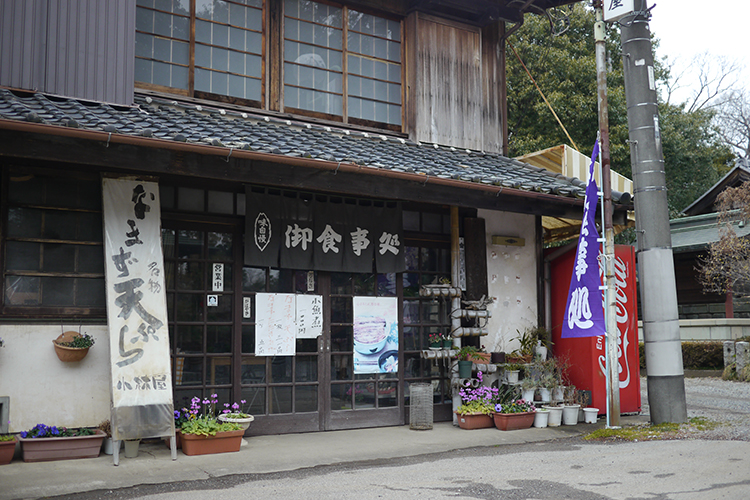
▲ Kobayashi-ya, a venerable institution founded 180 years ago
The Gunma region has long been prone to damage from lightning strikes. Indeed, “lightning and dry winds, a sense of duty and the milk of human kindness” are enumerated among the characteristics of Gunma on the Jomo karuta, a set of playing cards with illustrations and captions giving information on Gunma’s natural features, history, and industries. The Raiden or “Thunder and Lightning” Shrine was built to ward off this constant threat from the skies. Besides lightning, today many worshippers come to appeal to the god for protection against ice storms and earthquakes. People also visit the shrine to pray for the safe completion of electrical construction projects. Before the shrine gate stands the catfish restaurant Kobayashi-ya, a venerable institution founded180 years ago.

▲ The Raiden Shrine in Itakura. The god worshipped here is said to ward off lightning .

▲Namazu-san, the catfish enshrined at the Raiden Shrine, is a favorite with worshippers. Stroke it, they say, and it will protect you against earthquakes—and boost your confidence too.
“Kobayashi-ya is a big draw because of the fresh, delicious catfish they serve. It doesn’t have a peculiar taste. That’s because the restaurant insists on sourcing only natural Japanese catfish, and it keeps them in a tank on the premises until they regurgitate all the mud. Besides catfish tempura, which is a nice way to enjoy the soft, plain-tasting white flesh of catfish, Kobayashi-ya is known for its deep-fried minced catfish. This is prepared by mincing catfish into surimi fishpaste, bones and all, then mixing it with tofu, carrot, and perilla seeds and other vegetables, wheat flour, miso, and all that. The resulting paste is then rolled into balls and deep-fried. The balls are crispy on the outside and fluffy on the inside, and they taste exquisite, with the perilla seeds accentuating the subtle flavor of the miso.”
The catfish has a large head, and it would be a shame just to eat the flesh. That’s why mincing and frying came to be the preferred way to serve it: it lets you eat the bones and head as well, with nothing going to waste. “This method of preparation makes it possible to squeeze every last drop of nutrition out of the catfish.” explains Aya. “So besides tasting great, it also makes a lot of sense.”
The catfish roe tempura, which appears on the menu in spring, is popular for its soft texture, which resembles that of shirako (milt) tempura. Many regulars come especially for it at that time of year.
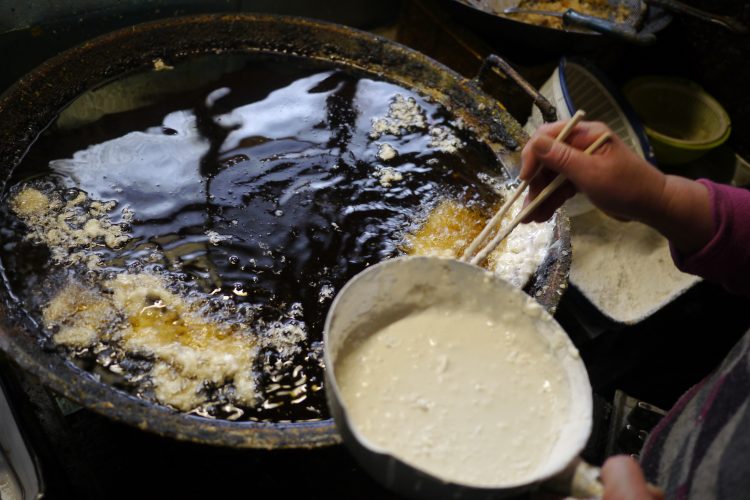

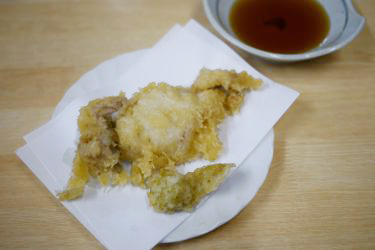
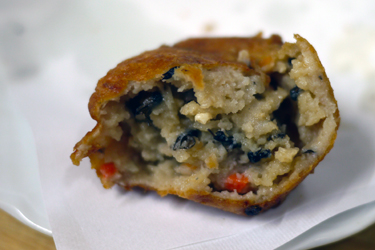
▲Catfish tempera (left), a good way to enjoy the soft, plain-tasting flesh.
Deep-fried minced catfish (right), which tastes delicious with its fluffy texture and miso flavor.
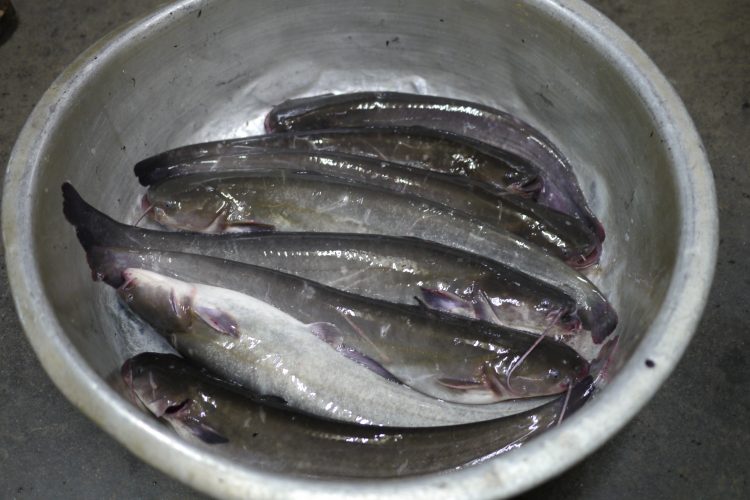
“Until the Edo period, catfish inhabited the waters of western Japan, such as the Yodo River, Lake Biwa, and Lake Suwa. Then in the Edo period they were found in the Kanto region and northeast Honshu as well. By the mid-Showa period, they were widely enjoyed in Iwate, Gifu, Tochigi, Gunma, Saitama, and Shiga, among other prefectures. Even today, Kaizu on the Nobi Plain in Gifu Prefecture has a restaurant that serves broiled catfish in kabayaki sauce, which is also popular dish.”
Once upon a time, many other freshwater fish besides eel and ayu regularly graced Japanese dining tables and filled Japanese bellies. But with the spread of refrigeration technology and the evolution of the distribution network, seafood became ubiquitous, and opportunities to eat saltwater fish exploded. In recent years, moreover, it’s fair to say that freshwater fish other than eels have fallen on hard times. Scientists are even studying how to breed catfish that taste like eels. “It’s a shame so many people aren’t aware of the allure of freshwater fish,” observes Aya. “Not only do they make for a classy dish, they’re also highly nutritious and have their own delicious taste quite distinct from that of saltwater fish.”
If you ever come across a place that serves catfish or other freshwater fish dishes on your travels, be sure to try it.

food culture researcher
food culture researcher
food culture researcher and Secretary of the Research Division at the National Council for Washoku Culture
Born in Osaka prefecture, Kiyoshi is involved in researching traditional regional Japanese cuisine and the dietary habits in fishing and farming communities as well as writing and giving lectures about local foods.
Recent publications include Washoku Techo [Washoku Handbook] (co-author, published by Shibunkaku), Furusato no Tabemono [Hometown Food] (Washoku Culture Booklet No. 8) (co-author, published by Shibunkaku), and Shoku no Chizu [Maps of Food], Third Edition (published by Teikoku-Shoin).